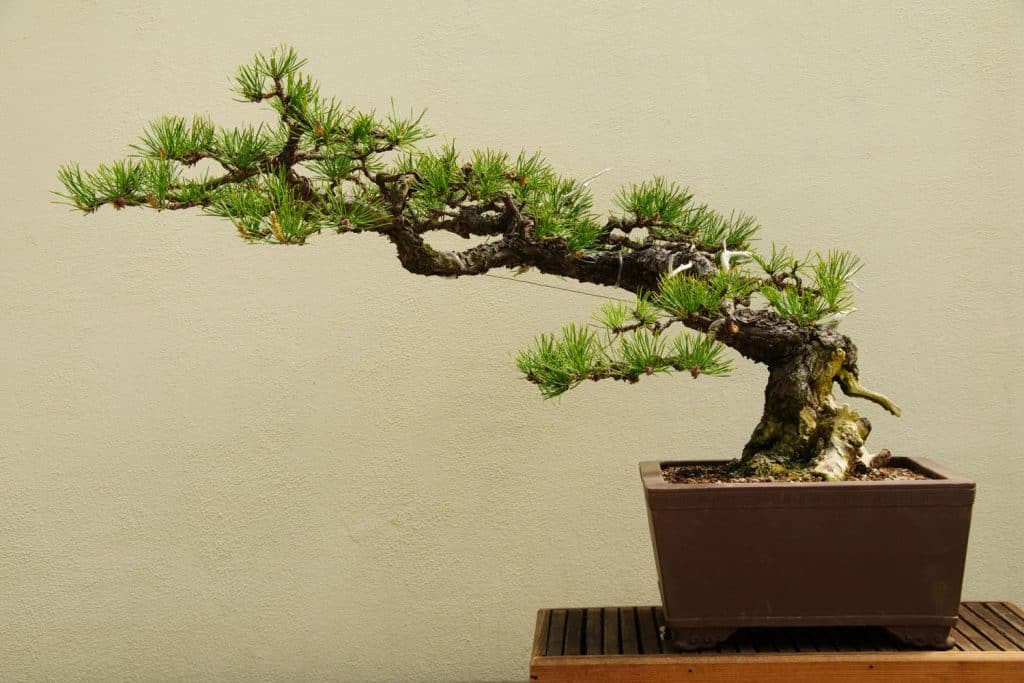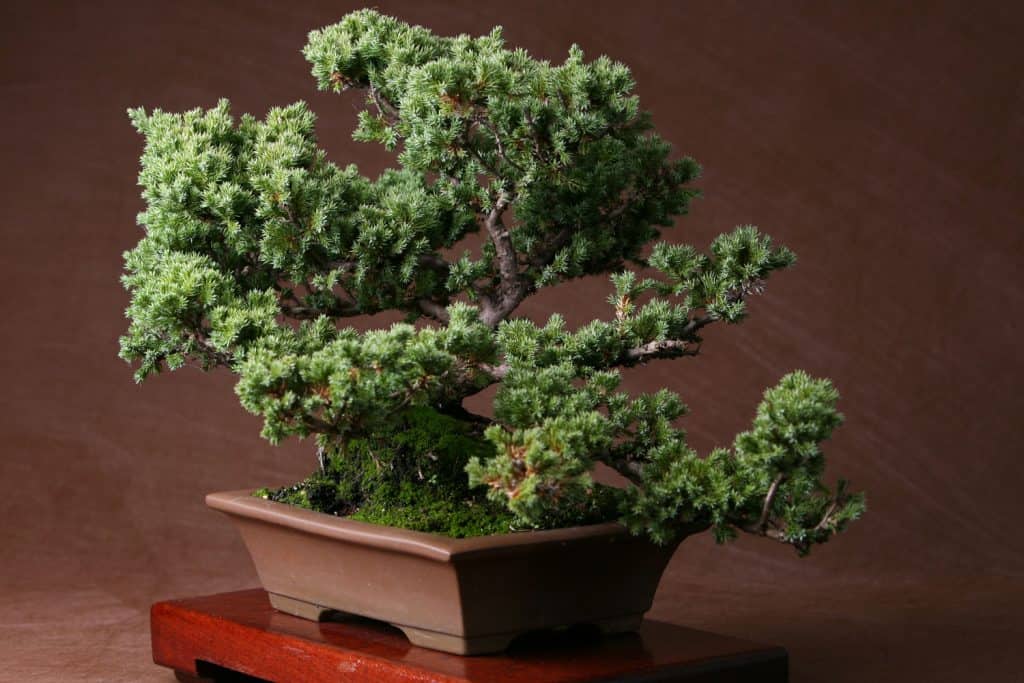Bonsai trees can be particular in their care needs, and their pots are no exception. Do you have a Bonsai but don't know which kind of pot is truly the best for it? We have done the work to find you some good options.
A Bonsai pot should relate to your tree, both visually and in its shape. Generally, straight trunk trees will do best in rectangular pots, while curved/soft-lined Bonsai do better if their pot has a rounded element. Dimension-wise, your Bonsai pot should be around one to two-thirds the size of your tree to properly support its roots.
As we begin, we will cover all things Bonsai and tag some helpful products. Whether you want to get into Bonsai or have a few trees started, we've got an idea for you. With that said, let's get right into this topic!
How To Choose A Bonsai Pot
There are a few things to consider when picking out a pot for your Bonsai. According to Bonsai Empire, you want to start by determining whether your tree is masculine or feminine.
Another important factor to think about is your tree's size, determining how big or small your pot needs to be. Generally, oval and rectangular pots should be 2/3 the height of your tree, while round and square pots should be closer to 1/3.
Masculine Bonsai Pot
First, we have a good example of choosing a pot for a masculine Bonsai. Although your pot doesn't have to be brown, we recommend keeping it an Earth tone/more serious-looking, but this will depend on your Bonsai tree.
Feminine Bonsai Pot
Next, we have a good idea for anyone working with a more feminine Bonsai. Like we covered, your Bonsai pot should have a similar look/color to your tree, so matching it to its flowers is an easy way to create harmony between the two.
Leaves And Soul Glazed Ceramic Bonsai Pot
This pink ceramic Bonsai pot has an oval design, is durable, measures 4.87 x 6.12 x 2.75 inches, and comes in various color/shape options.
Follow this link to see it on Amazon here.
Small Bonsai Pot
Here we have an example of a smaller Bonsai pot that is perfect for beginners. Style-wise, the shape of your pot is not as important if you plan to keep your tree super small, so don't worry too much about specifics.
Medium Bonsai Pot
Another example we have for a Bonsai pot is a medium-sized option like this. For those of you wanting to grow your Bonsai to a somewhat normal size, using a medium pot is a good way to encourage your tree to develop without getting too big.
GROWNEER Bonsai Growing Pots
This pack of three medium-sized Bonsai pots are durable plastic material, have a rectangular design, and measure 9 x 6.6 x 3.2 inches.
See these Bonsai pots on Amazon here.
Large Bonsai Pot
Next, we have a large Bonsai pot that is ideal for anyone wanting a bigger tree. Although growing a Bonsai to this size will take upwards of ten years, it is always a good idea to choose a pot that can support a mature tree's weight and root system.
What Shape Should My Bonsai Pot Be?
Take a look at your tree's trunk to determine what shape your pot should have. We recommend a rectangular/squared-off pot for Bonsai trees with a straight trunk, and for curved trunks, we think round or oval pots will balance your tree best.
Of course, this is not required for Bonsai, but it will help balance your tree physically and energy-wise.
Rectangular Bonsai Pot
Here we have a good example of using a rectangular-shaped pot for your Bonsai. You can see how this pot balances the tree and keeps it from becoming top-heavy.
We also want to bring your attention to how this Bonsai has a similar colored green pot, which creates a good theme for your tree.
Seven Inch Green Glazed Bonsai Planter
This green Bonsai planter has a glazed finish, measures 7.5 x 5.5 inches, and comes in a few color/size options.
Click here to see this pot on Amazon.
Rounded Bonsai Pot
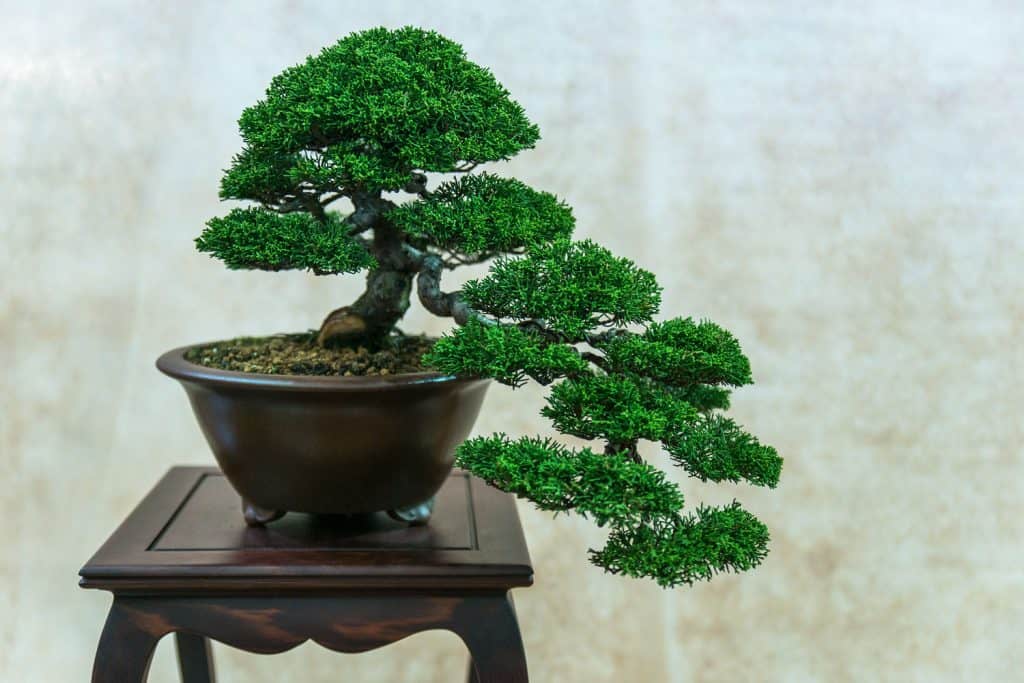
Here is another Bonsai pot example for those with an unsymmetrical/curved tree. This round pot not only balances this Bonsai tree's energy but also keeps it from toppling over.
Namako-Yu Round Glazed Ceramic Bonsai Pot
This round Bonsai pot has a glazed finish, is perfect for smaller trees, measures 5 x 5 x 3 inches, and comes in a few different colors.
View this Bonsai pot on Amazon here.
Oval Bonsai Pot

Next, we have an oval-shaped Bonsai pot that is perfect for this slightly curved tree. Generally, you want to choose an oval pot at least an inch deep for your tree to support it properly.
Why Do Bonsai Trees Need Small Pots?
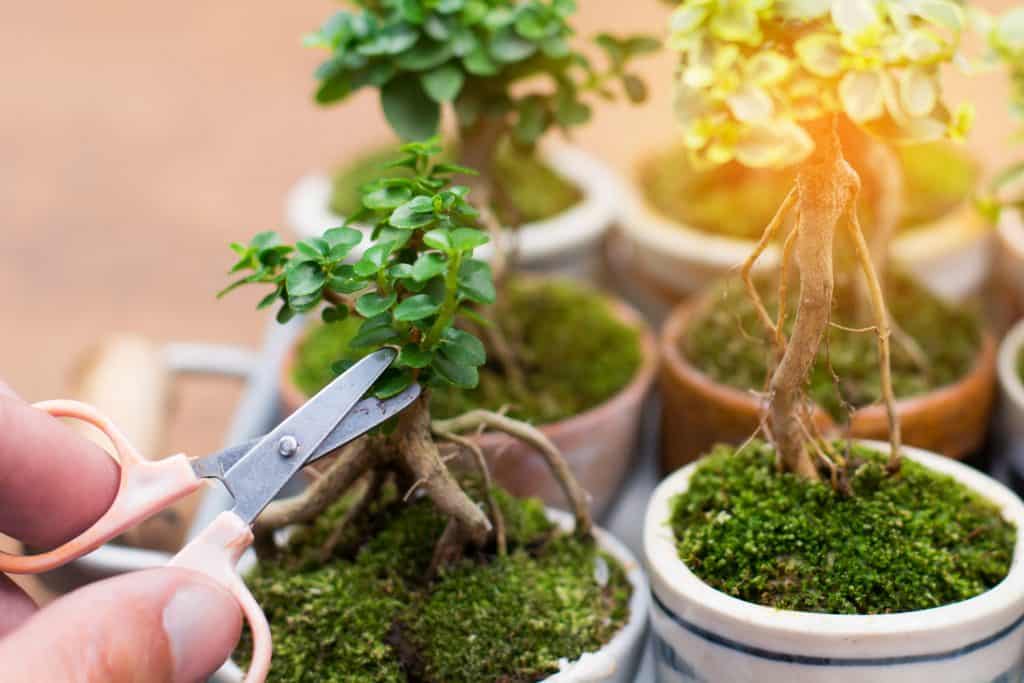
Smaller pots keep them miniature. Planting your Bonsai tree in a small pot will constrict its root growth, ultimately keeping it tiny.
That said, regular pruning and shaping are also essential for keeping your Bonsai tree small, so we recommend getting a pair of garden shears.
What Happens If Your Bonsai Pot Is Too Big?
Most times, if your Bonsai pot is too big, it can cause your tree to become rootbound. Although you want your Bonsai to have enough room to spread out a little, giving it too much space can negatively impact its growth and even cause it to get sick.
We recommend having your Bonsai pot be two to three inches deep or equal to the diameter of your tree's trunk. Of course, this will depend on your tree's pot and its shape but generally, try to have it be deep enough to support a root system.
Happy Bonsai Mini Glazed Pots
This set of four Bonsai pots have a rounded design, come with four mesh drainage screens, and measure between one and two inches tall.
Follow this link to view them on Amazon.
What Color Should My Bonsai Pot Be?
There aren't specific rules for choosing a Bonsai pot color. As we covered earlier, a Bonsai tree's pot should channel its energy, whether feminine, masculine, or somewhere between.
If you want your Bonsai pot to be a fun color or pattern, try to incorporate similar tones from your tree, like finding one that matches its flowers or leaves.
Bright Colored Bonsai Pot
Here we have a bright yellow Bonsai pot idea that is very cheerful. Although this tree is tiny, we appreciate how this Bonsai grower chose to go with a rounded pot to balance the curved shape of the tree's trunk and branches.
Patterned Bonsai Pot
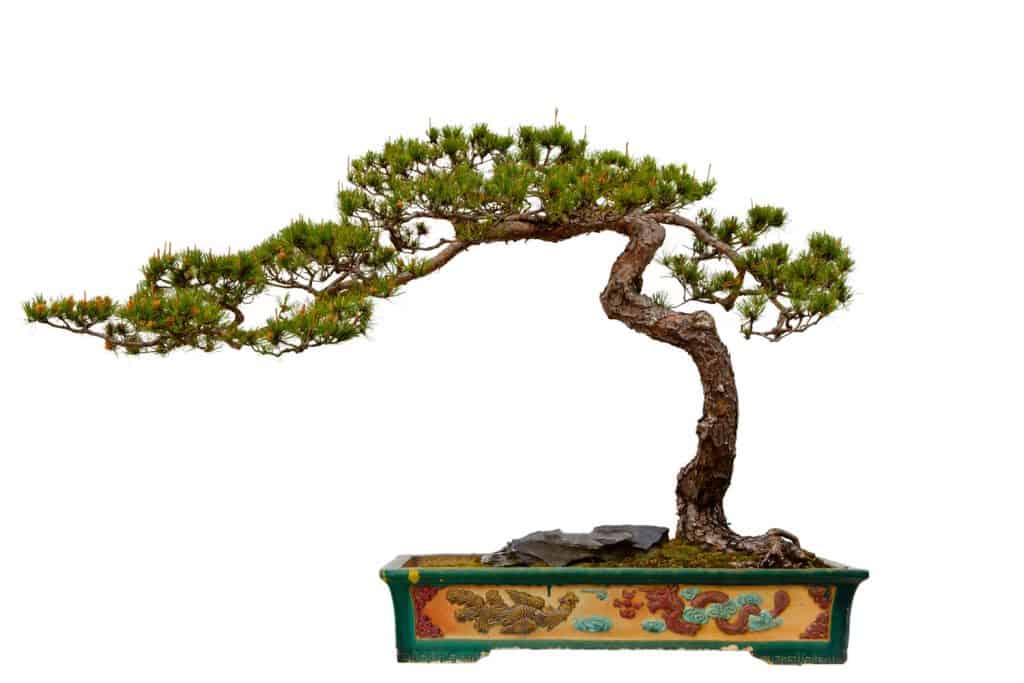
Another idea for your Bonsai is a patterned pot similar to this example. Regardless of whether your tree falls into masculine or feminine energy, we think using patterns is always a fun way to spice things up.
Can You Put Two Bonsai Trees In The Same Pot?
It is possible to put multiple Bonsai trees in the same pot as long as you give them enough space. You want to find Bonsai trees with common climate/care needs from similar locations.
That said, we also recommend spacing your trees at least four to six inches apart to prevent their roots from growing into each other.
Double Bonsai Pot Idea
Here you can see how doubling your Bonsai in the same pot is possible if they have enough room. That said, as long as your pot is at least ten inches across, it should be able to fit two small Bonsai trees.
How Do You Know When To Repot A Bonsai Tree?
Typically, younger Bonsai will need to be repotted every two years, while mature trees don't need it more than every three to five. With that said, an easy indicator your tree is ready for more space is when its roots start to circle each other, so keep an eye out for that.
Do I Need To Repot My Bonsai Tree?
Although it can be tedious, it is necessary to repot your Bonsai every few years. Doing this will prevent your tree from becoming pot-bound, which can be deadly for a plant.
Of course, this timeline will depend on your Bonsai's species and growth rate but plan on repotting every two to three years.
Repotting shouldn't be done on a regular basis. Early in the spring, carefully remove your Bonsai tree from its pot and inspect it. Your Bonsai needs to be repotted if you notice the roots wrapping around the root system. Leave it and recheck in the spring if the roots are still enclosed in the soil.
To Wrap It Up
Finding the right pot is essential whether you are new to Bonsai or want to expand your garden. Your Bonsai pot should channel your tree's energy and be about 2/3 its current size.
When it comes to shape, choose a rectangular pot if your Bonsai has a straight trunk and a rounded or oval-shaped pot if its trunk is curved. Regardless of your Bonsai knowledge, remember to trim and shape your tree regularly, and don't be afraid to have fun with its pot's colors and patterns.
Want more on Bonsais? Check out these helpful posts below!

![An old and gorgeous bonsai tree planted in a rectangular clay pot, What's The Best Pot For Bonsai Trees? [Inc. 11 Perfect Examples]](https://gardentabs.com/wp-content/uploads/2021/10/Whats-The-Best-Pot-For-Bonsai-Trees-Inc.-11-Perfect-Examples-683x1024.png)

